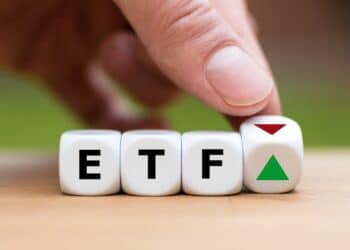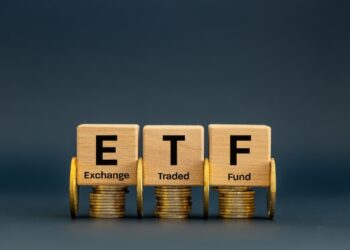Post global financial crisis regulation, changing government policy and a shift in demographics have created a very different investment landscape to that of previous decades. Matt Hopkins provides guidance on how to deal with the “new normal”.
The last 15 years have been characterised by angst over ‘moral hazard’ or the ‘Greenspan Put’.
Investors were implicitly encouraged to take even more risk, because if anything went wrong, the US Federal Reserve (the Fed) would simply step in and cut interest rates. You couldn’t lose.
Moral hazard is rarely mentioned these days. Partly because the US no longer has any scope to cut interest rates – after all, real rates are negative; and also because we have now come to expect intervention as ‘normal’.
The Fed remains ready to use new types of stimulus to maintain asset prices if required, and has rebuked the US Government for not being ‘ready enough’.
But today is a different story, with discussion of the ‘new normal’, as coined by PIMCO, whereby re-regulation, low interest rates, the influence of government policy and shifting demographics create a different investment landscape to that of previous decades.
Some point out that these cycles are all part of the bigger picture.
As most would agree, there has always been a major systemic crisis of some sort; it is merely the details that vary.
The question investors are asking is: “what does this mean for our savings and investment strategies?”.
Risk on?
An example came across my desk recently in the form of a research report from one of our research services. The strategists discuss the pros and cons of the current market, but ultimately end up saying ‘we don’t know what will happen, we don’t agree, and we are moving to benchmark’.
Moving to benchmark is the investment manager’s equivalent of battening down the hatches and taking no risk.
But the benchmark still contains most of the risk for the end investor, who is left to make their own choice as to whether the risks are worth taking.
Australia is somewhat unique in the world, in that our very competitive savings industry has the highest equity concentration of all countries signatory to the Organisation for Economic Co-operation and Development (OECD) convention.
This means our funds essentially live and die by the performance of the world’s equity markets, particularly our own. It is worth noting that Australian pensions also had the third largest losses globally (after Ireland and the US).
There is nothing wrong with this per se, especially over appropriate time horizons.
However, it does raise the question of whether that much risk is appropriate at all times – and who makes the decision to alter it? The industry recognises the problem of equity risk concentration, and continues to explore a number of potential solutions.
Addressing risk concentration
Risk parity
Risk parity seeks to enforce diversification through greater holdings of fixed interest assets.
Instead of the bulk of the portfolio holding equities and equity-like risk, the portfolio is constructed such that a greater (equal?) contribution comes from bonds.
To get that balance right means a lot of bonds, and to achieve the required return means leverage.
This actually works most of the time, particularly when rates travel steadily downwards, as they have for the last 30 years.
It will continue to offer better long-term results if we remain on the path of long-term deflation, à la Japan.
It will not work so well in highly inflationary environments, or when deficit financing becomes a worry for investors.
History shows that when both inflation and real yields rise rapidly, most assets perform very poorly, especially equities and bonds, but also inflation-linked bonds.
Commodities may do well if they are part of the inflation problem – otherwise they are also likely to underperform. The late 1970s provides an example of when all but a few assets failed to transition into an inflationary shock.
Leading historical economists Ken Rogoff and Carmen Reinhart (authors of This Time Is Different: Eight Centuries of Financial Folly) also point out that sovereign debt defaults tend to increase during inflationary periods and banking crises.
Gold and bank share prices suggest this is currently underway. Ultimately, it is sensible to have an active eye on the level and type of bonds one holds under this approach. This must include the option of holding none.
Tail risk hedging
Tail risk hedging is where a portion of capital is allocated to option positions intended to pay off handsomely in times of stress.
And they do. The crucial questions here centre on risk and cost.
We can hold a long volatility position that will definitely perform well in a sell off, but the cost of holding it in other environments could bankrupt you.
The acompanying chart shows the VXX exchange traded fund (ETF), which provides exposure to the VIX index on the S&P 500 (VIX is a direct measure of market uncertainty).
Yes, the ETF (exchange traded fund) pays off in stressful times, but we would have lost 80 per cent of our capital if we held it for the last two years.
Another way of considering the insurance question is to examine realised volatility versus the market pricing of volatility.
An analogy would be – how many homes actually burn due to bushfire compared to the estimated number of homes at risk implied by insurance premiums.
Unsurprisingly, the implied typically far exceeds the reality. In other words, most people would actually do better selling the insurance.
Clearly, timing is important. Critically, a framework of valuation is required to ensure the protection we take is cost-effective, or better still, provides a profit.
Dynamic asset allocation
Dynamic asset allocation, where asset allocation can be adjusted to reflect changing market conditions, is another option. This is logical, but again requires a framework for assessing the myriad information that comes into play, and allows that information to be reflected in the portfolio.
Valuation can be a poor guide at times, but tends to dominate at extremes. An assessment of the earnings and earnings growth outlook – and other factors such as sentiment and market liquidity – is necessary to supplement valuation.
The portfolio implications
At AMP Capital, our philosophy is that providing the best return with the least uncertainty for investors demands all of these aspects.
That is – true diversification, tactical tail hedging, dynamic asset allocation and the application of a well-considered alternative and active strategies.
These are just some of the approaches that can be taken by funds that are actively managed to their objectives, rather than peer groups or strict policy benchmarks.
Given this, there are three main themes we are currently applying to our portfolio.
1) Yield
Yield is usually the most stable part of an investment return. When capital growth is constrained and market stress is high, yields can become even more attractive.
Australian yields are strong in equities, REITs, and credit.
For equities, focusing on higher quality dividend yield has added benefits, as these stocks often demonstrate more capital stability and stronger risk-adjusted returns over market cycles.
2) Active management
Adding value through active management is a strongly diversifying source of return in a portfolio, whether it be in less benchmark-aware stock selection strategies or hedge funds.
However, this also requires different skill sets and perspectives.
While many hedge fund strategies have struggled in the high correlation world of macro-driven ‘risk on’ and ‘risk off’, fundamental stock selection and arbitrage strategies do ultimately have periods of opportunity during and after market stress.
Australian equities also continue to offer strong and consistent rewards from active management.
3) Patience
Stress usually means that valuations reach a point where they become so attractive that the worst is almost certainly discounted. It is always at times of extreme uncertainty, and accompanied by a cry of ‘this crisis is different’.
To take advantage of cheap valuations requires a plan, skilled managers, patient investors and cash on hand.
While there are no guarantees in life, the freedom to invest in the most attractive assets and most diversified mix, and to selectively add protection at the right price, makes for a more robust outcome for investors. And this is regardless of whether it is the new normal, abnormal or same old normal.





